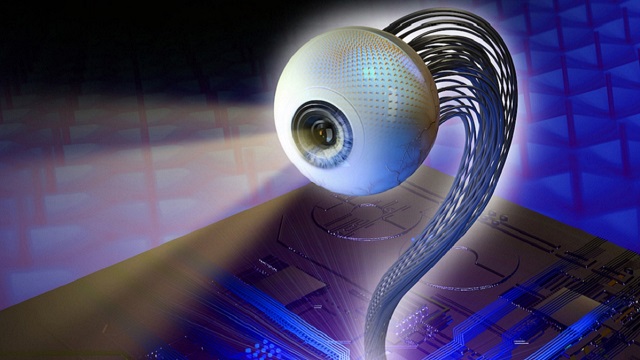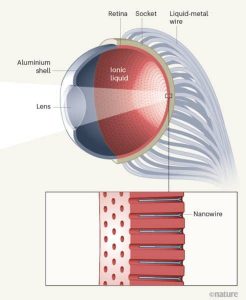New artificial eye design mimics the real thing.
This resource combines an understanding of Biology, Chemistry and Physics to develop new robotic technology that could impact society in many ways in the future. Use the resource with students in years 8 and 9 to build on and apply knowledge from years 1, 3, 4, and 5 sciences.
Word Count: 338

Researchers in Hong Kong have developed a proof-of-concept artificial eye with a similar structure to a human one. And one day it could do a better job, they suggest.
Its hemispherical retina contains densely packed, light-sensitive nanowires made from a perovskite – a promising material for solar cells – that mimic the photoreceptors of the human eye.
It’s the photoreceptor cells – around 10 million per square centimetre – and the domed shape of the retina that give human eyes a wide field of view, excellent resolution and highly sensitivity to light.
Leilei Gu, from the Hong Kong University of Science and Technology, and colleagues say recreating this in synthetic eyes has great appeal but until now has been challenging, because the shape and composition of the retina are difficult to fabricate.
But they think they have the answer. Writing in the journal Nature, they say their device showed it can “see” by reconstructing images of three letters: E, I and Y.
The resolution is not great at this stage because the array comprises just 100 pixels, each with three nanowires. But the design has the potential to have even better resolution than human eyes, the researchers suggest, as it is possible to increase the density of nanowires to more than 10 times that of photoreceptors in the human eye.
And it would look the goods in a robot.
“Particularly for humanoid robots, the vision system should resemble that of a human in appearance to enable amicable human-robot inter- action, in addition to having superior device characteristics,” Fan and colleagues write in their paper.
Hongrui Jiang from the University of Wisconsin – Madison, US, is impressed, but notes in a commentary in the same journal that there is still work to be done, notably to reduce the size of the liquid-metal wires and establish the operational lifetime of the artificial retina.
Nonetheless, given this and other recent advances, it seems feasible, he suggests, “that we might witness the wide use of artificial and bionic eyes in daily life within the next decade”.
Login or Sign up for FREE to download a copy of the full teacher resource






